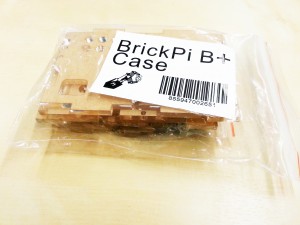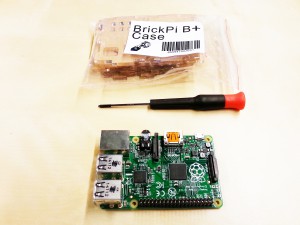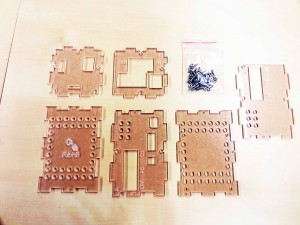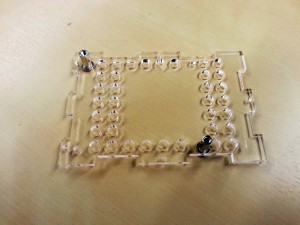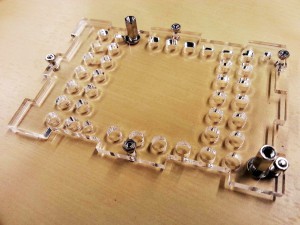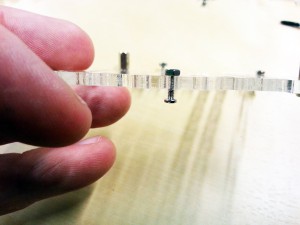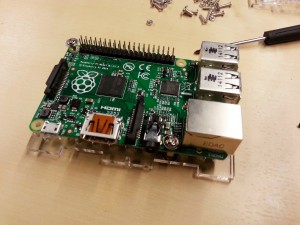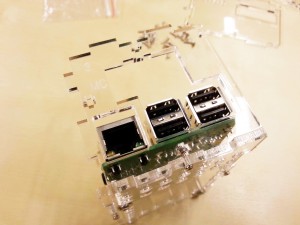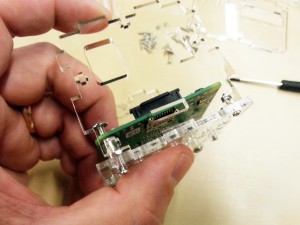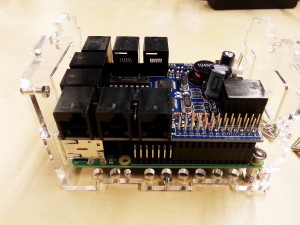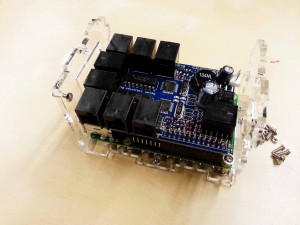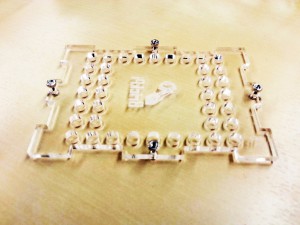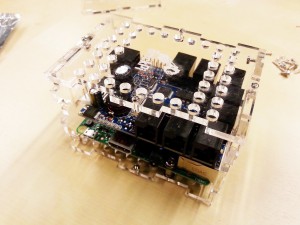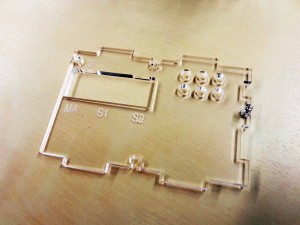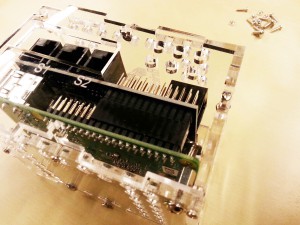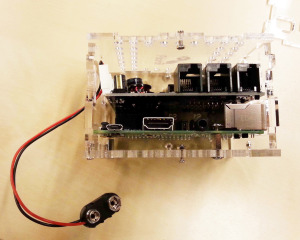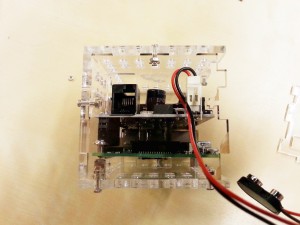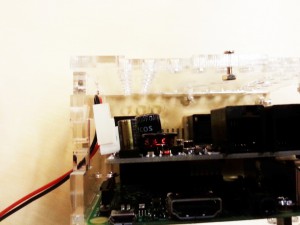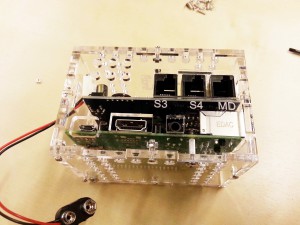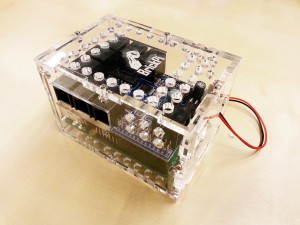This is a guide to assembling the Upgraded BrickPi B+ Case.
You can watch the video below or see written step-by-step instructions further below.
A few notes before you begin:
You’ll need a small phillips head screwdriver, preferably a jeweler’s size screwdriver.
The acrylic case parts all come covered in protective wrap to protect it from scratching. You’ll first want to remove the wrap.
1). Unpack the parts from packaging.
You should have six acrylic pieces. Each piece will have numbers etched on them.
2). Find the bottom base plate and attach the two hex spacers.
This is Part 1, and has a 1 engraved on it. To orient the part: the engraving should be on the inside, towards the Pi.
3). Attach five small screws to Part 1 with small nuts.
The nuts should be facing upwards, on the side of the engraving.
4). Thread two screws through the Pi B+/2, and the attach to the board.
The screws will be tight! You might want to screw them all the way through the Pi to open up the holes before screwing tightly to the acrylic base Part 1.
5). Slide Parts 3 and 6 onto the Part 1.
Remember, the engraving goes on the inside! Leave the small screws loose at this point.
6). Attach the BrickPi and Power Pack.
7). Attach four screws to the top plate (Part 5).
The bolts should be on the engraving side of the acrylic.
8). Attach Part 5, the top plate, to the case.
Leave the screws loose at this point.
9). Attach the side plate, Part 2, to the BrickPi Case.
10). Attach the power connection, and pull the cord through Part 6.
11). Slide on Part 4.
12). Finally, tighten up the screws.
Be careful not to over-tighten the screws!


